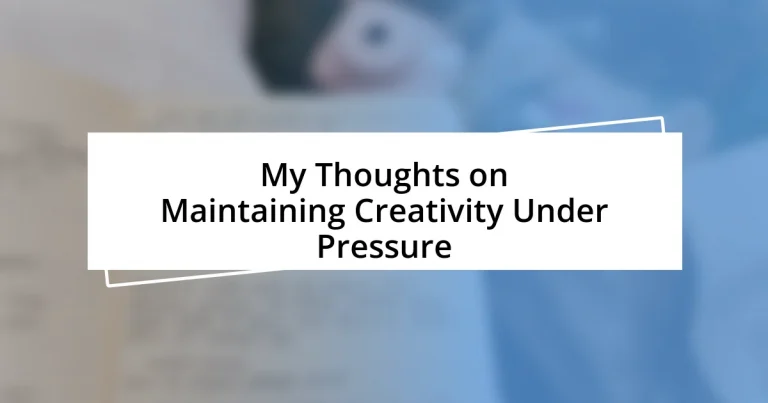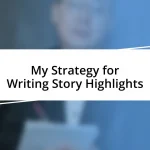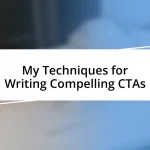Key takeaways:
- Creativity under pressure can be enhanced by recognizing stress triggers and implementing strategies such as breaks and mindfulness.
- Establishing a creative routine with a balance of structure and flexibility fosters a more productive and inspired mindset.
- Constraints can inspire innovative ideas and solutions, turning limitations into opportunities for creative growth.
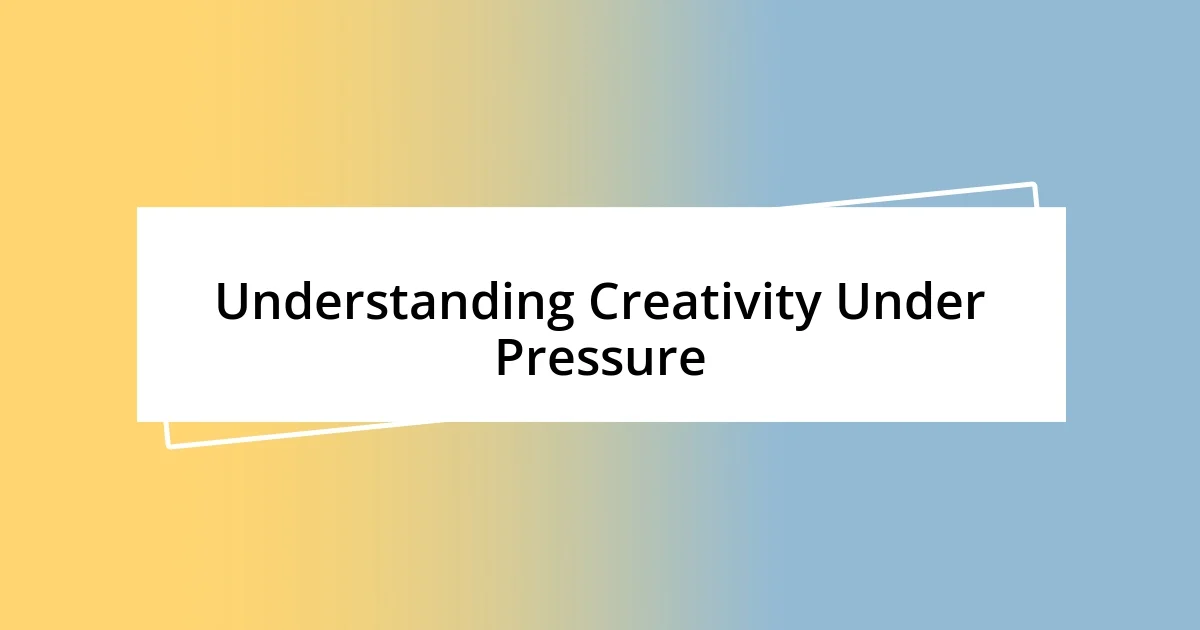
Understanding Creativity Under Pressure
When faced with pressure, creativity often becomes a double-edged sword. I remember a time during an intense project deadline when I felt completely blocked, yet the urgency pushed me to dig deeper within myself. Have you ever noticed how constraints can actually trigger a more profound level of creativity?
In those critical moments, the pressure can scramble your thoughts or spark a wellspring of inspiration. I found that turning my anxiety into a structured plan helped me channel my creative energy. It’s fascinating how uncertainty can sometimes clarify our ideas, leading us to solutions we hadn’t previously considered.
Understanding your psychological response to stress is key in these situations. For instance, I noticed that taking short breaks to reset my mind often helped alleviate the pressure. By doing this, I could approach problems from fresh angles—almost like stepping back to see the whole picture. Have you discovered strategies that help you thrive when the stakes are high?
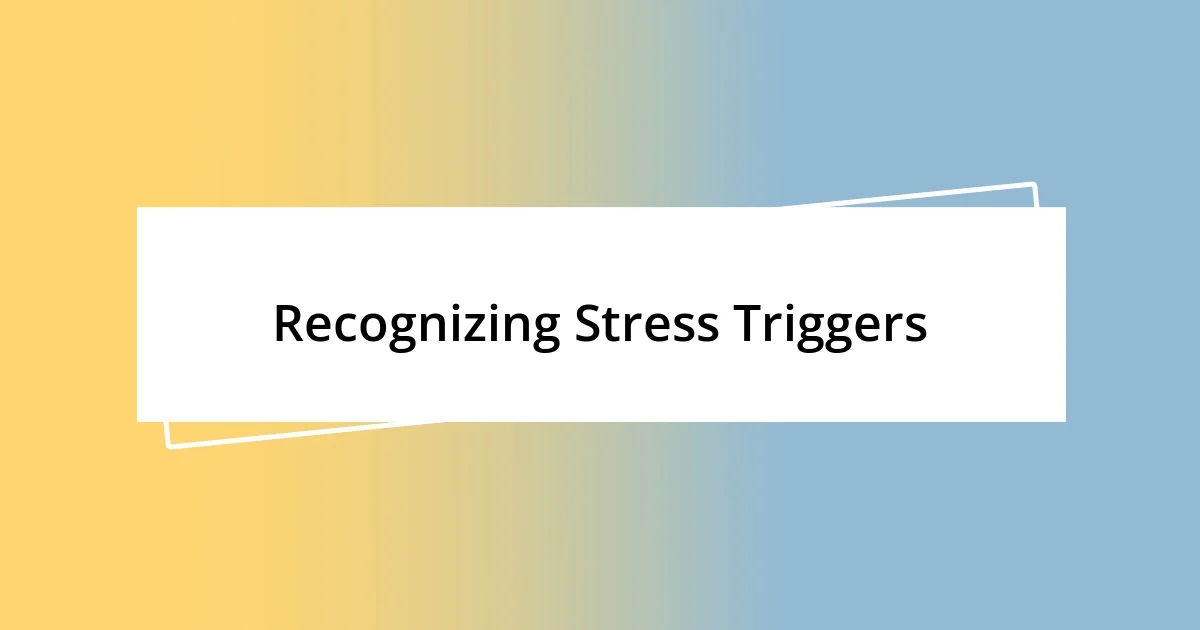
Recognizing Stress Triggers
Recognizing stress triggers is essential for navigating the creative process, especially when under pressure. I’ve often found that certain situations or even specific times of day can amplify my stress. For example, I notice my anxiety peaks during late afternoons when fatigue sets in, making it harder to think creatively. It’s like a fog rolls in, and suddenly, everything feels overwhelming.
To identify your own stress triggers, consider these factors:
- Deadlines: Tight timelines can create an intense pressure cooker environment.
- Environment: Chaotic or distracting surroundings can inhibit focus and creativity.
- Personal Expectations: High self-imposed standards often lead to increased anxiety.
- Feedback: Anticipating criticism can make you second-guess your ideas.
- Fatigue: Physical tiredness can diminish mental clarity and creativity.
Becoming aware of these triggers is a powerful step towards managing your well-being and sustaining creativity when it truly matters.
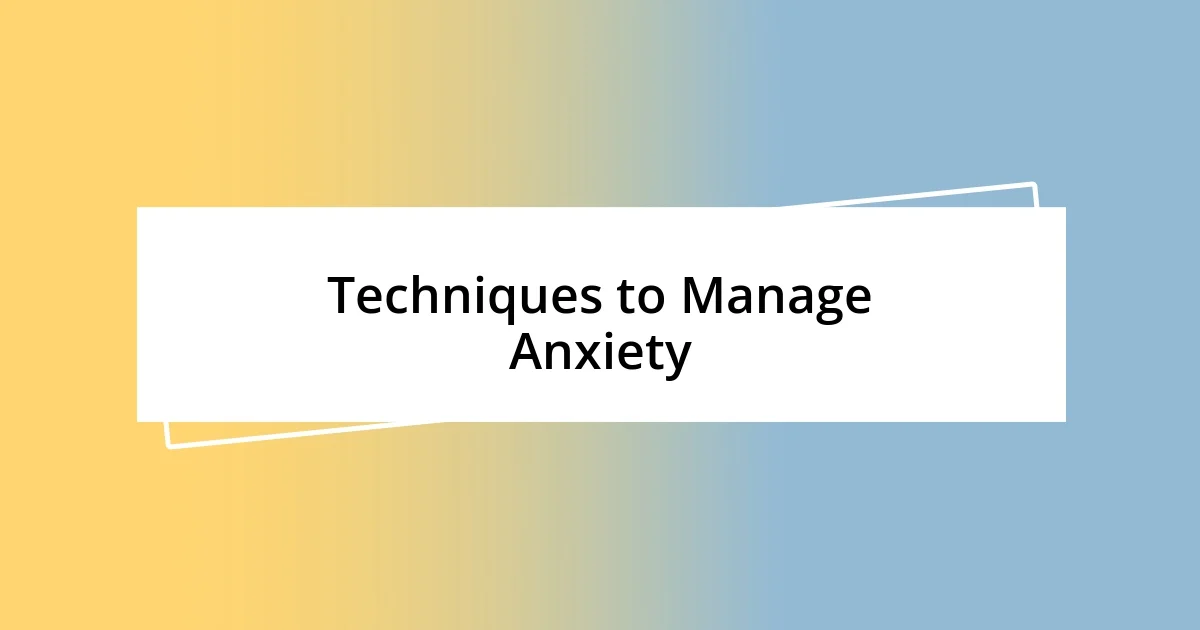
Techniques to Manage Anxiety
Although anxiety can be overwhelming, I’ve found that implementing structured relaxation techniques can significantly help manage it. For instance, when I’m feeling particularly stressed, I often turn to deep breathing exercises. Just a few minutes of focusing on my breath allows me to reset and regain my composure. Isn’t it remarkable how something so simple can ground us amidst chaos?
Another technique that has worked wonders for me is mindfulness meditation. I recall a time when an important presentation was looming over me, and my racing thoughts were sabotaging my creativity. By dedicating just ten minutes to mindfulness, I was able to clear my mind and approach the situation with a renewed perspective. Have you ever tried meditating to ease anxiety? It can be a game-changer for harnessing creative energy.
Finally, physical activity is another excellent method to combat anxiety. I remember going for brisk walks during breaks, which not only calmed my nerves but also flooded me with new ideas. It’s amazing how movement shifts our mental state. I encourage you to find an activity that you enjoy and use it as a tool to bring your creativity back to life.
| Technique | Description |
|---|---|
| Deep Breathing | Focus on your breath to ground yourself, alleviating immediate anxiety. |
| Mindfulness Meditation | Spend time focusing on the present moment to clear your mind and regain clarity. |
| Physical Activity | Engage in movement to release anxiety and stimulate creativity. |
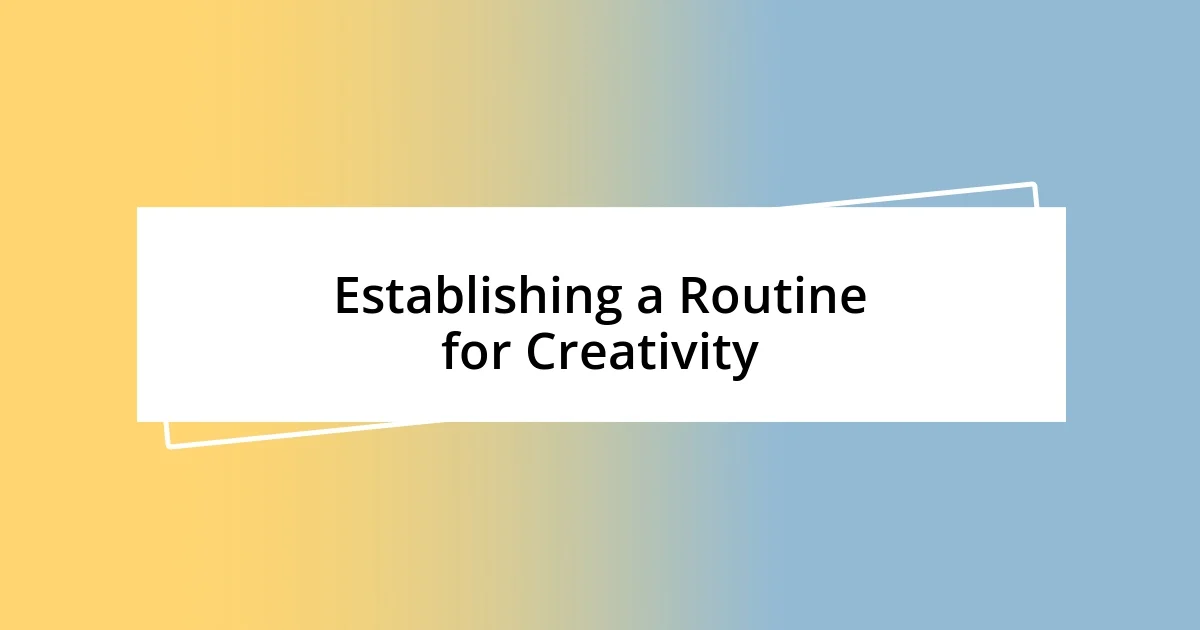
Establishing a Routine for Creativity
Establishing a routine for creativity has been a game changer for me. I remember when I used to jump into creative tasks haphazardly, and the results were often disappointing. Now, I begin my day with a morning ritual—like journaling or sketching—that sets a positive tone for creativity. Doesn’t it feel great when you have a consistent method to kick-start your imagination?
I’ve also learned the importance of setting aside dedicated blocks of time for creative work. There was a project I had to tackle under a looming deadline, and I found that breaking it down into smaller, manageable segments helped my ideas flow more freely. By scheduling these sessions in my calendar, I create a commitment to my creative self, which makes it easier to dive in. Have you tried blocking out time in your week specifically for creative endeavors? It can transform the way you engage with your projects.
Lastly, I realized that a balance between structure and flexibility is key to sustaining my creativity. For instance, on days when I feel particularly sparked, I allow myself to extend my creative time or shift gears if the inspiration strikes. This blend of routine and spontaneity allows me to stay grounded while also being open to new ideas. Isn’t it interesting how a little flexibility in a routine can lead to unexpected bursts of creativity?
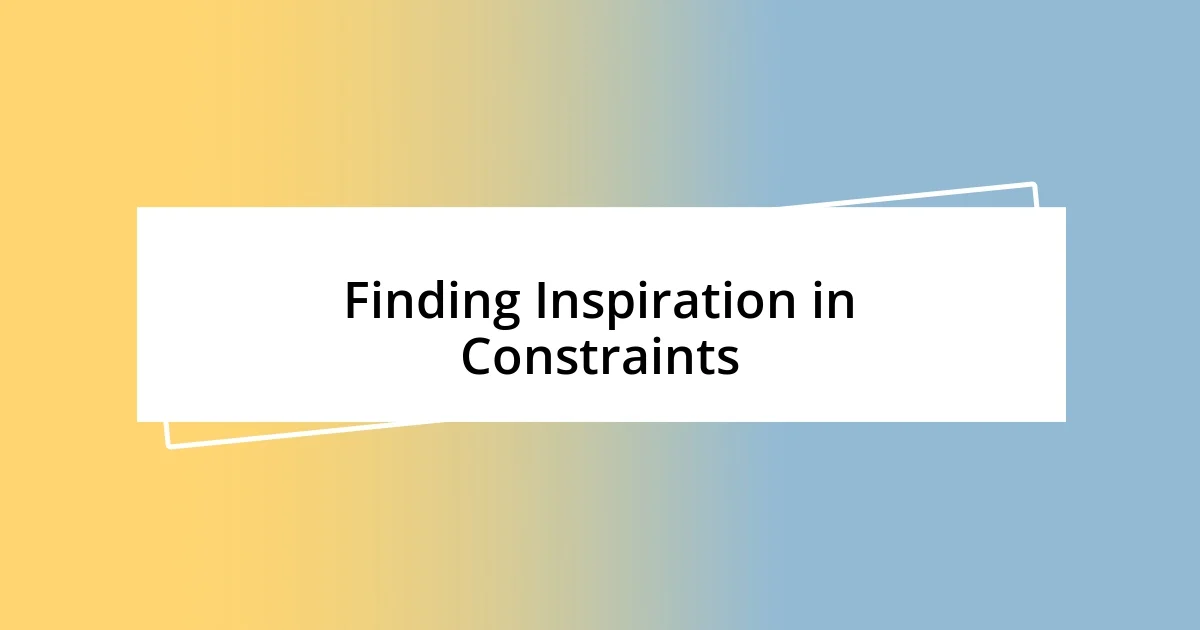
Finding Inspiration in Constraints
In my experience, constraints can often serve as a surprising catalyst for inspiration. Take the time when I was working on a project with a strict budget; I felt cornered at first. However, those limitations pushed me to explore unconventional materials and resourceful techniques that ultimately resulted in a unique final product. It’s fascinating how placing restrictions on ourselves can spark creativity in unexpected ways, don’t you think?
I vividly recall a challenging period when I had to create an art piece within a specific theme. Initially, I felt stifled by the limitations, but it was precisely that framework that ignited my imagination. By diving deeper into that theme, I unearthed connections and ideas I wouldn’t have explored otherwise. It’s a profound reminder that sometimes, boundaries can open doors we didn’t know existed.
Also, I’ve found that sharing my constraints with others can yield surprising results. I once joined a creative group where we challenged each other to produce work based on arbitrary rules we set together. The results were astonishing; the camaraderie and shared limitations led to an outpouring of innovative ideas. Have you ever engaged in a similar creative challenge? Embracing constraints can transform our perspective and elevate our creative pursuits.
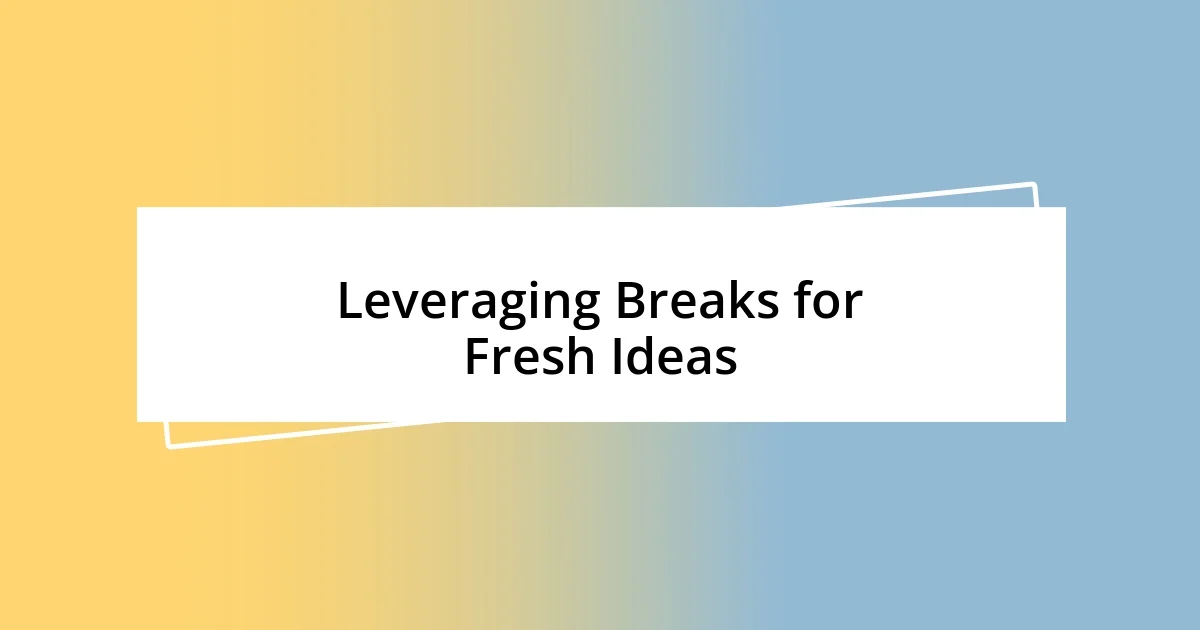
Leveraging Breaks for Fresh Ideas
Taking short breaks has been a revelation in my creative process. I remember working late one night on a particularly stubborn graphic design project. After stepping away for just ten minutes to grab a snack, I returned with a fresh perspective, allowing me to see solutions that had previously eluded me. It’s incredible how a brief pause can clear the mental fog, right?
I’ve also experimented with various activities during breaks, sometimes opting for a quick walk outside. The change of scenery not only re-energizes me but opens my mind to new environments and ideas. I often find that the rhythm of my surroundings can spark fresh thoughts I hadn’t considered before. Have you ever noticed how stepping into nature can shift your mindset?
Moreover, I’ve noticed that mindfulness practices during breaks can have a profound impact on my creativity. Simply taking a few moments to breathe deeply and focus on the present can ground my thoughts. I once spent five minutes doing some simple stretches and breathing exercises, which left me feeling rejuvenated and ready to tackle my next challenge. It’s remarkable how prioritizing those moments of self-care can cultivate a fertile ground for creativity to thrive, don’t you think?
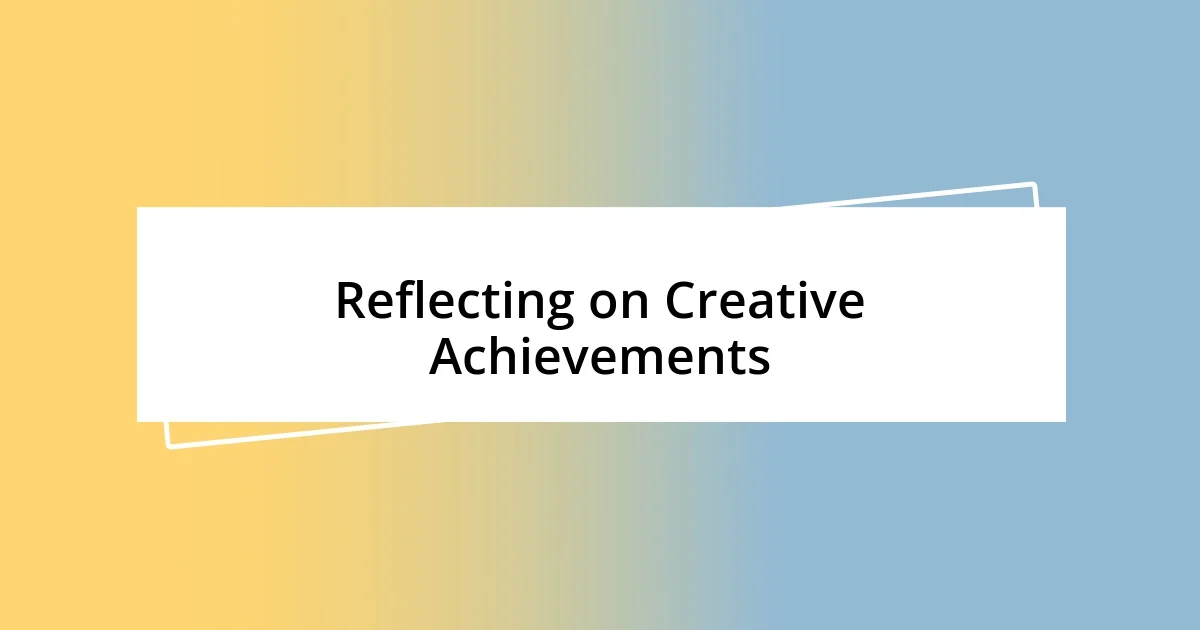
Reflecting on Creative Achievements
Reflecting on my past creative achievements often brings a sense of accomplishment and motivation. I still remember a time when I completed a collection of short stories that I had poured my heart into. Initially, I was overwhelmed by self-doubt, but holding that printed collection in my hands felt like a triumph against the pressures I had faced. Isn’t it amazing how tangible proof of our hard work can elevate our confidence?
Sometimes, I like to tell others about my creative milestones, not just to celebrate them but to process what they taught me. For instance, after completing a mural for a community project, I found that the collaborative aspect added layers to the experience. Sharing this achievement with my peers helped me realize that creativity often flourishes in community. Have you ever considered how discussing your successes can deepen your understanding of your own creative journey?
Another aspect I find valuable is reflecting on the emotional highs and lows experienced throughout my creative processes. I recall a particularly intense week spent on a design campaign where the pressure was immense. Completing it successfully brought joy, but I also realized how exhaustion and stress were powerful motivators. This contrast helps me appreciate the fulfillment that comes after overcoming challenges. Isn’t it enlightening to think how our struggles are intricately tied to our successes?












